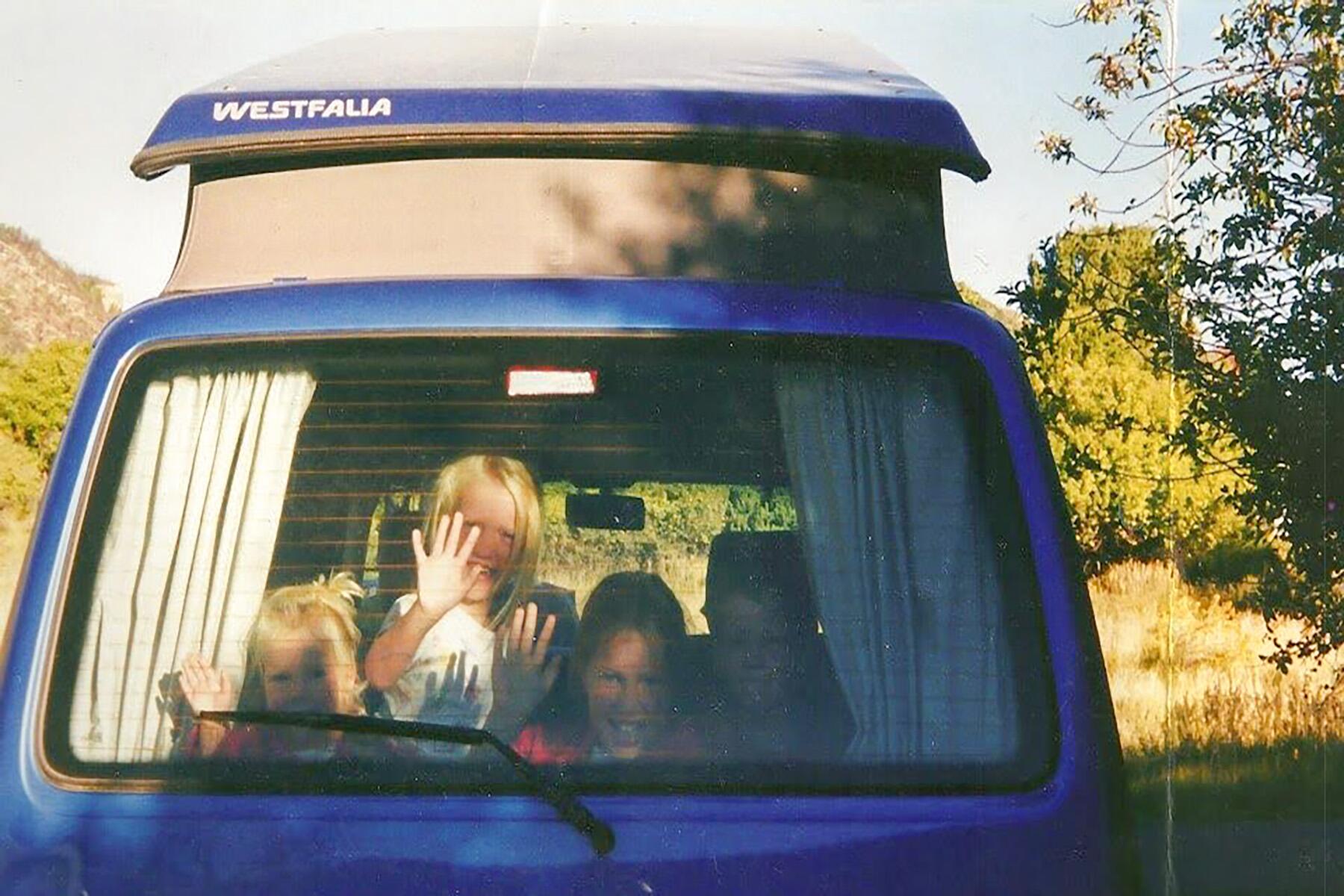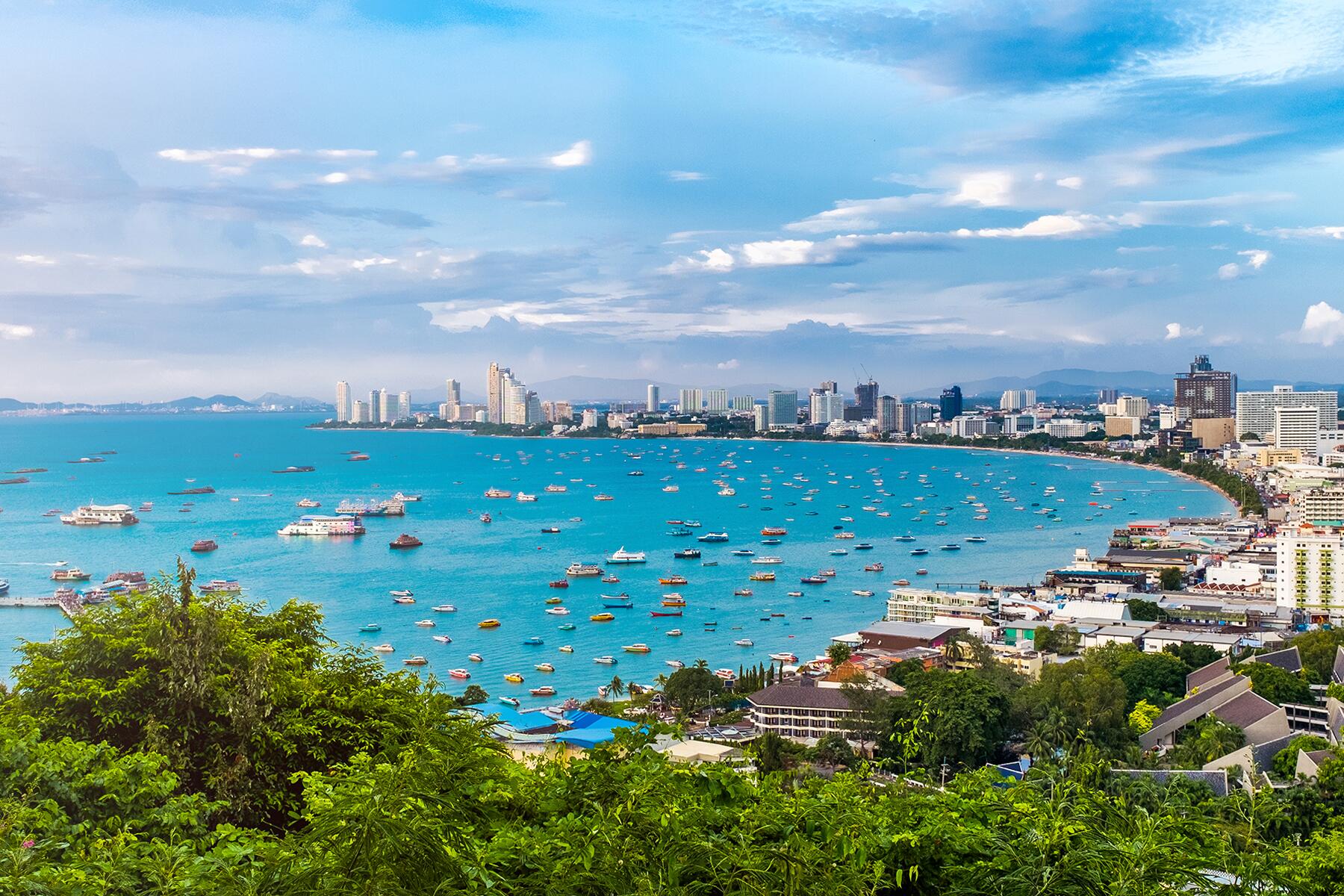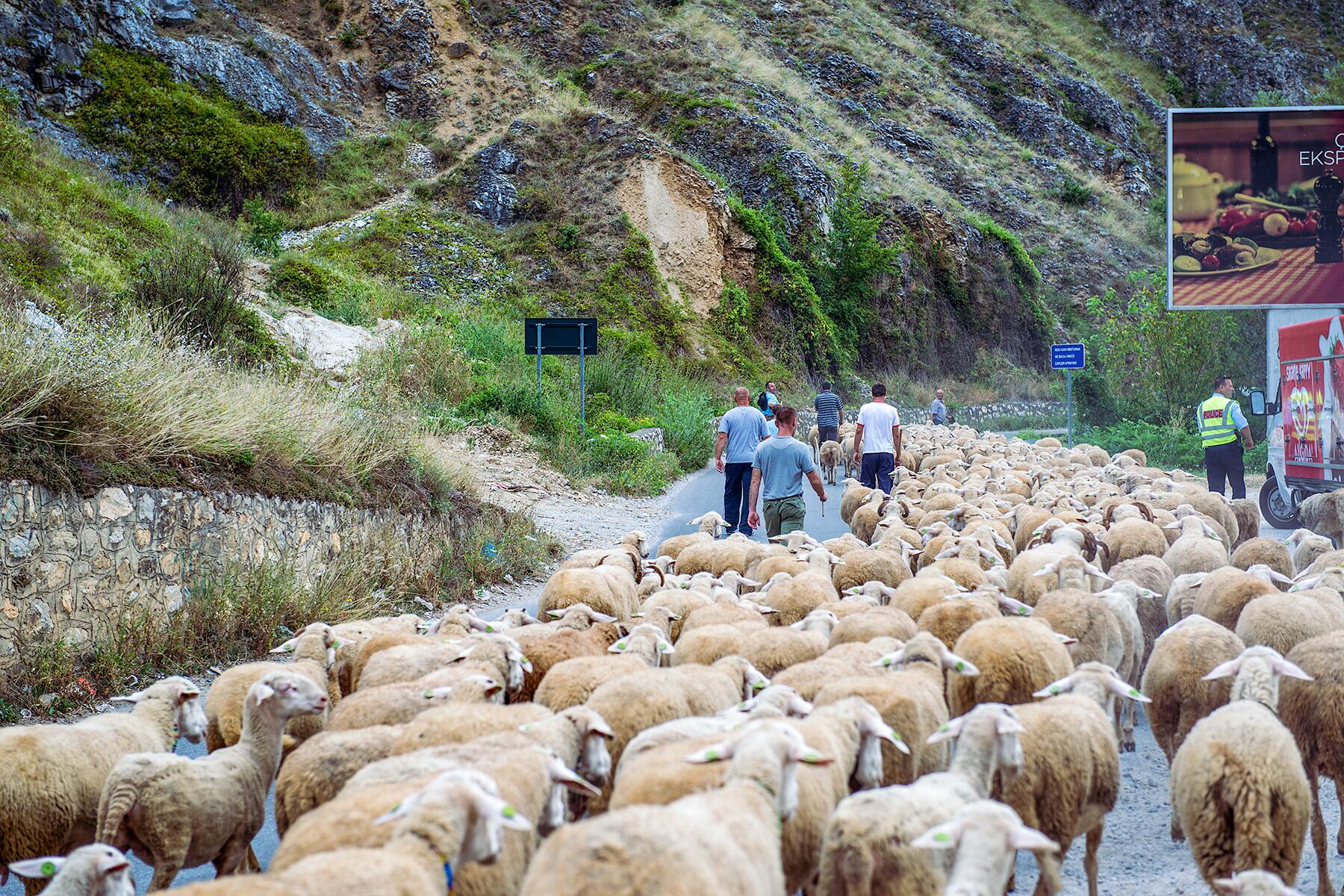- ⁄
- Travel News
- ⁄
- Family •
- National Parks •
- Outdoors •
- Travel Tips •
- Trip Ideas
This borderline between Argentina and Brazil is unlike any other you have ever seen.
Iguaçu Falls, or Iguazú Falls, depending on which side you find yourself on at this South American waterfall hub, is nothing like the pictures. No photo captures the gargantuan sprawl, the rumbling thunder of water, the grandiose full rainbow, and sheer beauty of the UNESCO World Heritage Site National Park’s subtropical jungle. The world’s largest waterfall system will shock all of your senses into overdrive with its obscene natural beauty. Don’t let the logistics of a two-country trip scare you—we’ve scoped it all out for you.
Is It Really That Beautiful?
Yes. Absolutely yes. As the largest waterfall system in the world with approximately 275 waterfalls located in the same canyon structure, its beauty and power are overwhelming. The sounds of crashing water, a full rainbow, and awe-inspiring local flora and fauna make these waterfalls feel like a tropical paradise right out of a movie. There is nowhere else in the world where you can be surrounded by hundreds of waterfalls simultaneously, making this site impossible to compare.
Where Exactly Is It Located?
The U-shaped Falls are located on the Iguazu River spanning the width of around 1.7 miles, serving as a border between the Misiones province of Northern Argentina and the state of Paraná in Southern Brazil. The Falls are thus located in Iguazú National Park (Argentina) and Iguaçu National Park (Brazil) respectively, with both parks offering a lush jungle experience. Just downstream from the falls, the river becomes a three-country borderline separating Argentina, Brazil, and Paraguay. From each country, a viewing platform is available offering up a great place to take photos and learn some history about the divided area.
Recommended Fodor’s Video
Where Should I Stay: Brazil or Argentina?
It depends on the experience you want to have. The two key things to consider are how you plan to view the falls and what kind of environment you’d like to be in. Around 80% of the falls are located on the Argentinian side of the river, which means the best viewing option is from Brazil. The two outlying cities, Foz do Iguaçu in Brazil and Puerto Iguazú in Argentina, differ as well. The Brazilian city is more residential, offering up a quieter experience, while the Argentinian city caters drastically to tourists. For a less commercialized experience, we definitely recommend staying in Brazil. A great option is the Wyndham Foz do Iguacu, with its location in the heart of downtown, huge breakfast buffet featuring Brazilian and Continental offerings, plus its extremely spacious apartment-style rooms. For a more luxurious option, the Belmond Hotel das Cataratas is located directly in the Iguaçu National Park right across from the Falls. This a great choice if waking up early to avoid crowds is your travel motto.
How Do I Get There?
If you plan on staying in Argentina, you will have to fly into Buenos Aires before catching a direct flight to Cataratas del Iguazú International Airport (IGR) on Aerolíneas Argentinas or LATAM Argentina. For Brazil, you can fly into Foz do Iguaçu International Airport (IGU) directly from any major Brazilian city on airlines Azul, GOL, and LATAM Brasil. Each airport is located about 15 minutes away from the Falls. If coming just for the day, bus and taxi services are available between the Falls and airports as well as from nearby cities.
What Is The Best Way To Experience The Falls?
If you only have time to visit one country, make sure it’s Brazil. With far superior vistas than the Argentinian side and more options for viewing, you can manage to get the full experience of the Falls from this side alone if need be.
The first thing to do is enter the trail in Iguaçu National Park, where you will be immediately greeted with a beautiful panorama of the Falls. The trail crosses the entire width of the Brazilian side and every step is filled with breathtaking views of more waterfalls than you can count. The trail offers various lookout points ending at what is truly the best experience of it all: the walkway platform that winds along the lower base of the canyon right in front of Devil’s Throat, the largest and most powerful waterfall in the whole system. The trail is a very easy albeit packed concrete walkway with a few stairs that lets you get as close to the Falls as you want.
Other notable options are taking a wet or dry boat ride with Macuco Safari Boat Tours to the base of the Salto Macuco waterfall. Feeling the power of the raucous water from the small inflatable boat will entice thrillseekers. If you wish to get a bird’s eye view, try out a helicopter tour with Helisul. The short flight offers incredible views of the Falls and offers a glimpse into how big the surrounding forest truly is.
Will I Get Wet?
It depends on how close you choose to get. Yes, you can easily visit without the slightest amount of spray, but to do so would mean missing out on feeling the real power of Mother Nature. Getting a little bit wet is completely worth the stunning panorama from the lower walkway at the foot of the Falls. The absolute best view of the Falls is at the end of the lower trail directly at the bottom of Devil’s Throat, which will not leave you completely drenched, but is definitely enough water that electronics should be fully protected. Ponchos are sold on-site but are available cheaper everywhere around the city. However, do not forget to pack something to keep your electronics safe.
How Long Should I Spend There?
Commit to at least a half-day to soak up the experience on the Brazil side. The falls themselves don’t take that long to see, but leave some time to deal with crowds and the number of photos you will want to take. If you plan on seeing both sides, commit to a full day and check out the excellent walking trails on the top of the Falls in Argentina that offer endless exploration throughout the Park.
Where Can I Get The Best Photo?
The Brazilian walkway at the lower base of the canyon is the best perspective for photographing the falls head-on. It’s the closest you can get while still keeping any expensive camera safe, plus the view is a wonderful panorama with both the top and bottom of the falls in sight. If there are clear skies, an end of a rainbow will likely fit in the frame.
When Is The Best Time To Go?
Since the Falls are located in a tropical area, it is mainly accessible year round. The big decision is to go during the rainy or dry season. More rain brings greater volume to the falls, but it may also mean cloudy skies. The dry season means lower water levels, but the chances of a clear sky and rainbows are much greater, with guaranteed access to the trails and island. We recommend going during the transition of the rainy/dry seasons, July to October or February to April, for the mild weather and low number of tourists.
What Else Is There To Do Nearby?
Immerse yourself in the beautiful nature of the area by exploring the trails within the national parks after checking out the Falls. In Brazil, right across from the park entryway, is Parque das Aves. If you only have time for one activity outside of the Falls, make sure it’s this. The bird park is equal parts tourist attraction, conservation effort, and rehabilitation center. With about 40 acres of Atlantic Rainforest and over 1,500 birds, the majority of which have been rescued from illegal trade, this park offers great insight into the local environment. Witness the rescue missions and endangered species while learning about efforts to save the surrounding rainforest. We highly recommend signing up for the Backstage Experience for a richer educational interaction—plus, feeding flamingos and toucans along with other up-close bird encounters makes the tour truly unforgettable.
If you’re looking for something more active, sign up for kayaking or paddle-boarding with Aguaray Eco Sports. The three-hour tour begins with a short educational hike through the forest before it’s time to float down the river inbetween Argentina and Brazil. A dip under a waterfall at the end is a warm welcome after paddling under the sun all afternoon.
Where Should I Eat?
If you have one night in Brazil, make your way to Casa do Chef. In this stunning private property, you will embark on the history of Brazilian food with a six-course meal made from indigenous flavors with a gourmet spin. Everything is prepared in front of you with careful descriptions and lessons on the importance of each local ingredient. You will never know how delicious moqueca, a Brazilian fish stew-casserole, can be until you experience how it was eaten 600 years ago. A private Jazz concert, performed by the Chef himself, is a wonderful accompaniment to the dessert course.
If you find yourself with one night in Argentina, head to The Argentine Experience. This hands-on dining adventure teaches you all about classic Argentinian dishes and even how to prepare some of them yourself. Multiple courses, a plethora of wine, and a bit of theatrics make for an exciting dinner. After this, you will never let anyone else make you empanadas or mate. Why have someone do something you can do yourself? You’ll leave this dinner stuffed to the brim and a bit closer to becoming an amateur chef.





